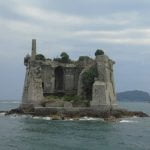The Po River, known as the “heart of Northern Italy,” is a significant waterway that travels through most of the northern region. In this article, we will delve into the history, geography, cultural significance, and environmental impact of this iconic river. Additionally, we will explore the cities along its path and provide tips for planning your own Po River adventure.
The Po River has played a crucial role in shaping the landscape and lifestyle of Northern Italy since ancient times. From being a source of trade and transportation to influencing art, literature, and music, this majestic river holds a special place in the hearts of the people in this region.
Join us as we embark on a journey to discover the rich history and cultural heritage that is intertwined with the Po River. We will also discuss the environmental conservation efforts aimed at preserving this natural wonder for future generations to enjoy. Whether you’re a history buff, nature lover, or simply seeking an unforgettable adventure, exploring Northern Italy along the Po River promises to be an enriching experience.
A Brief History of the Po River
The Po River has played a significant role in the history of Northern Italy, dating back to ancient times. Here is a brief overview of the river’s historical significance:
- Ancient Times: The Po River, known as Eridanus in ancient times, was a vital waterway for the Romans, who used it for transportation, trade, and agriculture. The river provided fertile land for farming and served as an important route for the movement of goods and people.
- Medieval Era: During the Middle Ages, the Po River continued to be an essential trade route, connecting Northern Italian cities with the rest of Europe. It also served as a strategic defense line and was often at the center of military conflicts.
- Modern Day: Today, the Po River remains an integral part of Northern Italy’s economic and cultural landscape. Its waters are used for irrigation, hydroelectric power generation, and industrial activities. The river also attracts tourists from around the world who come to explore its picturesque scenery and historic sites.
Throughout its history, the Po River has witnessed the rise and fall of civilizations, making it a symbol of continuity and resilience in Northern Italy.
The history of the Po River is intertwined with the story of Northern Italy itself. Understanding its historical significance can provide valuable insights into the region’s past and present-day identity. Whether you are interested in ancient civilizations, medieval trade routes, or modern-day environmental issues, exploring the history of the Po River offers a fascinating glimpse into one of Italy’s most iconic waterways.
The Geography of the Po River
The Po River, also known as the Pianura Padana, is the longest river in Italy, stretching over 650 kilometers from its source in the Cottian Alps to its delta at the Adriatic Sea. The Po River basin covers a vast area of Northern Italy and encompasses some of the country’s most fertile and productive lands. Its course takes it through several distinct regions, each with its own unique landscapes and characteristics.
The geography of the Po River is incredibly diverse, passing through mountains, valleys, plains, and wetlands as it winds its way through Northern Italy. The river begins in the Western Alps near the border with France before flowing eastward through the Lombardy and Veneto regions, finally emptying into the Adriatic Sea near Venice. Along its path, the Po River is fed by numerous tributaries, including the Dora Baltea and Ticino rivers.
Here are some key geographical features along the path of the Po River:
- The Cottian and Graian Alps: where the river originates
- The Piedmont region: where it flows past cities like Turin
- The Lombardy region: where it cuts across fertile plains and agricultural lands
- The Veneto region: where it approaches and meets the Adriatic Sea
The Po River plays a crucial role in shaping these landscapes, providing water for irrigation, supporting diverse ecosystems, and influencing local climate patterns. Its impact on agriculture, transportation, and urban development has been profound. As we explore further about this majestic waterway that travels most of Northern Italy let’s look at how its cultural significance has shaped traditions and lifestyles in these regions throughout history.
The Cultural Significance of the Po River
The Po River has played a pivotal role in shaping the cultural traditions and lifestyle of Northern Italy for centuries. Its influence extends far beyond its geographical significance, with the river being deeply intertwined with the identity of the region and its inhabitants.
Historical Influence
From ancient civilizations to modern-day society, the Po River has been a source of sustenance and inspiration for the people of Northern Italy. Historically, the river provided fertile land for agriculture and transportation routes for trade, which led to the development of prosperous communities along its banks. This historical connection to the river has left an indelible mark on the cultural practices, culinary traditions, and daily life of those living in this region.
Cultural Traditions
The Po River basin is home to a rich tapestry of cultural traditions that have been shaped by its presence. From traditional festivals and celebrations to folk music and dance, the influence of the river is evident in every aspect of local culture. The agricultural practices along the river have also given rise to unique culinary traditions, with an emphasis on fresh produce and fish from the river itself.
Lifestyle
The Po River has not only shaped cultural traditions but also impacted the lifestyle of those living in Northern Italy. The scenic beauty and recreational opportunities offered by the river have inspired outdoor activities such as fishing, boating, and riverside picnics. Additionally, many cities and towns along its banks have developed waterfront promenades and parks, providing residents with a place to relax and socialize while enjoying views of this iconic waterway.
As we delve into how the Po River has shaped the cultural heritage and way of life in Northern Italy, it becomes clear that its impact goes far beyond mere geography or history-it is an integral part of what makes this region so unique.
Exploring the Cities Along the Po River
The Po River, known as “il grande fiume” in Italian, is the longest river in Italy, stretching over 400 miles from its source in the Cottian Alps to its delta at the Adriatic Sea. As it winds its way through the northern Italian landscape, the Po River passes through several prominent cities, each with its own unique charm and history.
One of the major cities along the banks of the Po River is Turin, a vibrant metropolis with a rich cultural heritage. Known for its Baroque architecture, Turin is also famous for being the home of the shroud believed to have wrapped the body of Jesus Christ. Travelers can explore iconic landmarks such as the Mole Antonelliana and Palazzo Madama while enjoying delicious local cuisine and fine wines.
As the Po River continues eastward, it reaches Piacenza, a city steeped in history and architectural splendor. The historic center is filled with medieval and Renaissance buildings, including Piacenza Cathedral and Palazzo Farnese. Visitors can also indulge in regional delicacies such as culatello (cured ham) and tour local vineyards producing renowned wines like Gutturnio.
Finally, as the Po River nears its end at the Adriatic Sea, it flows through Venice, often referred to as “La Serenissima” due to its serene beauty and unique network of canals. This majestic city is famous for iconic attractions such as St. Mark’s Square, Doge’s Palace, and Rialto Bridge. Visitors can explore by gondola or vaporetto (water bus) while savoring Venetian cuisine and admiring masterpieces by renowned artists like Titian and Tintoretto.
| City | Notable Attractions |
|---|---|
| Turin | Mole Antonelliana, Palazzo Madama |
| Piacenza | Piacenza Cathedral, Palazzo Farnese |
| Venice | St. Mark’s Square, Doge’s Palace, Rialto Bridge |
The Po River as a Source of Inspiration
The Po River has long served as a muse for many artists, writers, and musicians throughout history. Its tranquil waters, picturesque landscapes, and vibrant cities have provided endless inspiration for creative works across various mediums. From classical paintings to modern-day music, the Po River has left an indelible mark on the artistic and cultural identity of northern Italy.
Art and Architecture
Countless painters have depicted the beauty of the Po River in their works, capturing its serene ambiance and scenic surroundings. The river’s influence can be seen in famous art pieces, such as Leonardo da Vinci’s “Virgin of the Rocks,” which features a backdrop that is said to have been inspired by the rugged terrain near the Po River.
Additionally, the river has played a significant role in influencing architectural styles in cities like Pavia and Cremona, where its presence has shaped the cityscape over centuries.
Literature and Poetry
Poets and writers have also drawn inspiration from the allure of the Po River, incorporating its imagery into their literary creations. Renowned Italian authors like Alessandro Manzoni have referenced the river in their writings, using it as a symbol of nature’s beauty and as a backdrop for their stories.
The melancholic yet enchanting atmosphere of the Po River has been immortalized in poetic verses by figures such as Giosuè Carducci, further cementing its role as a source of literary inspiration.
Music
The Po River has not only influenced visual art and literature but also found its way into musical compositions. In opera and classical music, references to the river can be found in works by composers like Giuseppe Verdi and Claudio Monteverdi.
Furthermore, folk songs originating from regions along the Po River often incorporate themes related to life along this iconic waterway, showcasing its importance in shaping musical traditions. The melodic flow of the river itself is said to have inspired melodies that evoke feelings of nostalgia and romance.
Overall, it is evident that the timeless beauty of the Po River continues to inspire creative expression in various forms across northern Italy’s rich cultural landscape.
Environmental Impact and Conservation Efforts
The Po River, also known as “Il Grande Fiume” (The Great River), is the longest river in Italy, spanning approximately 405 miles from its source in the Cottian Alps to its mouth in the Adriatic Sea. The river travels through some of the most picturesque and culturally rich regions of Northern Italy, making it a vital part of the country’s landscape and history.
This section will delve into the environmental impact and conservation efforts surrounding the Po River, emphasizing the importance of preserving its basin for future generations.
The environmental impact of the Po River cannot be overstated. As one of the major waterways in Italy, it plays a crucial role in sustaining the diverse ecosystems along its banks. Not only does it provide water for agriculture and urban areas, but it also supports a variety of plant and animal species.
However, human activities such as pollution, deforestation, and industrialization have taken a toll on the river’s health. This has led to concerns about water quality, habitat degradation, and overall ecosystem instability.
In response to these challenges, conservation efforts have been implemented to safeguard the Po River basin. These include watershed management initiatives, pollution control measures, reforestation projects, and biodiversity conservation programs.
Additionally, there has been an emphasis on promoting sustainable practices among local communities and industries to reduce their environmental footprint. Preserving the Po River and its surrounding environment is not only essential for protecting biodiversity but also for ensuring a steady supply of clean water for both human consumption and ecological balance.
| Environmental Impact | Conservation Efforts |
|---|---|
| The Po River sustains diverse ecosystems along its banks. | Watershed management initiatives have been implemented. |
| Human activities have led to pollution and habitat degradation. | Pollution control measures are being enforced. |
| Sustainable practices are promoted among local communities. |
Planning Your Own Po River Adventure
In conclusion, the Po River stands as a timeless symbol of the rich history, cultural significance, and natural beauty of northern Italy. From its ancient origins to its modern-day impact on the region, the Po River has played a crucial role in shaping the traditions and lifestyle of the communities along its banks.
As visitors explore the cities along the Po River, from Turin to Venice, they will witness firsthand how this iconic waterway has influenced art, literature, and music for centuries.
For those planning their own Po River adventure, it is essential to consider the environmental impact and conservation efforts aimed at preserving the unique ecosystem of the Po River Basin. By supporting sustainable travel practices and respecting the natural surroundings, travelers can contribute to the ongoing efforts to protect this vital waterway for future generations.
As travelers embark on their journey down the Po River, they will undoubtedly discover new depths of appreciation for northern Italy’s most iconic waterway. With its combination of historical significance, cultural influence, and breathtaking landscapes, the Po River offers an unforgettable exploration of one of Europe’s most captivating regions. Whether taking a leisurely cruise or embarking on a scenic hike along its banks, visitors are sure to be enchanted by what this remarkable river has to offer.
Frequently Asked Questions
What Is the Major River of Northern Italy?
The major river of Northern Italy is the Po River. It is the longest river in Italy, stretching over 400 miles from the Alps to the Adriatic Sea. The Po River basin is a significant agricultural and industrial area.
What River Traverses Most of Northern Italy?
The river that traverses most of Northern Italy is indeed the Po River. It flows through several major cities including Turin, Piacenza, and Cremona, providing important transportation and irrigation for the region.
What Was the Name of the River in the North of Italy?
The name of the river in the north of Italy is the Po River. It has been a vital waterway for trade and commerce throughout history, and its fertile valley is known for its agriculture, particularly rice cultivation.

I’m a passionate traveler, writer, and Italophile. My fascination with Italy’s history, art, and culture has led me on countless adventures across the Italian landscape. Through “I Live Italy,” I share my love for this extraordinary country and aims to inspire others to explore its boundless beauty.





